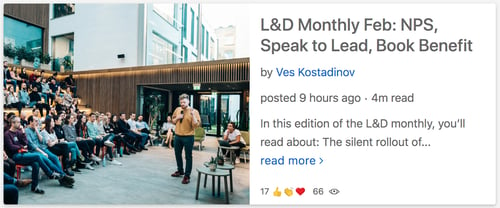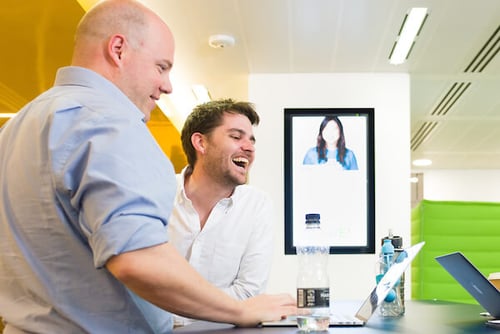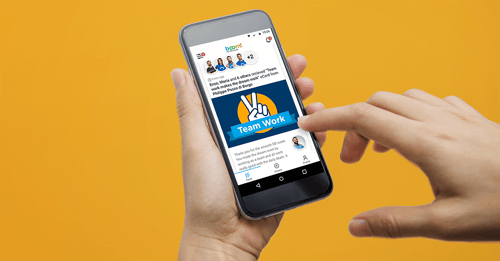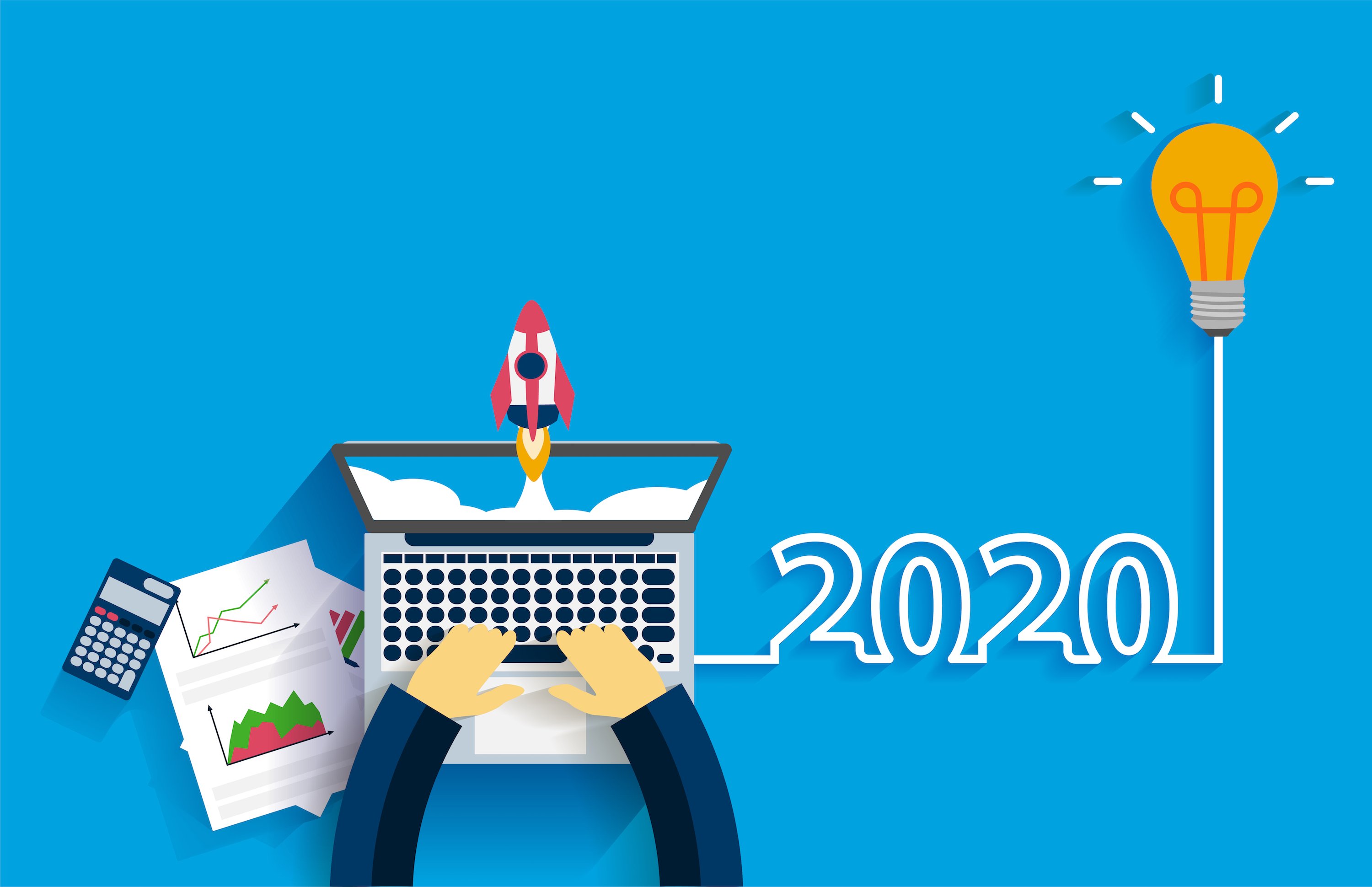5 min read
I spend most of my work week speaking with HR leaders and despite the differences across industries and size of businesses, the message that I hear almost every day is how it is becoming more and more challenging to connect with our people. Whether employees are working in different offices across the globe, or they're on the road all day without access to a computer, one thing is clear: Connection is the fuel to better engagement.
Connection across our business units is critical
When companies make it easy for employees to connect with each other and with the vision and mission of the business, the outcomes are overwhelmingly positive:
| Connected employees are well-informed: | they know what they need to make good decisions |
| Connected employees are efficient: | they know who’s responsible for what, they can comfortably reach out to the right people for support to help solve a customer’s problem or one of their own |
| Connected employees don’t operate in a vacuum: | they know that their actions make an impact, for both the good and bad |
These are the behaviors that will fuel business success now and into the future. But time and again, the results from engagement surveys and even our event polls show that communication between leaders and their employees needs improvement, and that reaching deskless or offline workers is critical but difficult, and that keeping teams in multiple locations on the same page is proving painful.
Why? Increasingly, Americans work in an environment that is dispersed, diverse and digital.
Let’s uncover the top three workplace trends for improving connections with dispersed employees.
Trend 1: Dispersed teams
It should come as no surprise that it’s hard to connect with geographically-dispersed teams, but in a country as large as the United States, it’s an unavoidable pain-point for many industries. Whether you're working in the healthcare, manufacturing or finance industry the likelihood is you have remote workers or deskless staff who aren't in front of a computer all day.
In addition to those dispersed because of the nature of their job, a study by FlexJobs show that over the last 10 years remote work has grown 91% in the U.S. and 4.7 million people in the U.S. currently telecommute, up from 3.9 million in 2015.
And this is a trend that continues to rise. According to International Workplace Group, 80% of U.S. workers would turn down a job that didn't offer flexible working.
Whether we like it or not – and whether our businesses are prepared or not – this dispersed workplace trend means employees aren’t all in the same office at the same time, or in an office at all. It’s harder to build culture and keep employees engaged and informed when they’re dispersed.
To keep employees connected:
- Create spaces and opportunities for people to connect digitally if they can’t connect physically. This may mean investing in tools that enable more video conference calls, instant messages, or blogs that are written and published by people within the business (not just HR or members of the leadership team!).
 Here's an example of how our Learning & Development team shares news and connects with 400+ employees across 7 locations with a blog on our employee communications platform.
Here's an example of how our Learning & Development team shares news and connects with 400+ employees across 7 locations with a blog on our employee communications platform.
- Introduce a peer-to-peer recognition and reward program with a rolling social recognition wall that displays accomplishments in real-time. Seeing the minutiae of everyday accomplished makes remote employees feel visible and valued, and encourages interaction by enabling employees to react to and comment on ecards and awards.
Trend 2: Diverse workforces
Workplaces are becoming more diverse in race, ethnicity, gender, religion and age. Even if your workforce doesn't have every single generation working in it, the likelihood is you have experienced a generational gap, with leaders or managers growing up in a different decade to those with working on the frontline or your back office.
We have grown up with very different expectations and attitudes towards their employers, different communication methods and styles, and different tools of the trade. This inevitably means needing to learn different ways that you can communicate and connect with these people.
To keep employees connected:
- Don’t wait for employees to reach milestones before you recognize their progress and contribution. The average tenure for American employees is 4.2 years, meaning traditional recognition programs that reward tenure every five or so years are outdated and don’t make an impact to everyday engagement, which is why it's key to move beyond years of service awards.
- You can connect a multi-generational workforce by focusing your employee engagement initiatives on programs that deliver the innate – and universal – human needs of respect, purpose and relationship. Using strategic recognition designed for different generations to connect an individual’s everyday work to the strategic goals or values of your business means you’ll likely improve motivation and engagement across all generations.

Trend 3: Digital tools
The tech and social media revolutions have created employees who experience immediate feedback, transparency, personalized service, and abundant choice in their everyday lives.
Not only does this put pressure for employers to provide the right tools and platforms to connect and collaborate more efficiently, it also means employees have higher expectations of the experience and tools they should have at work and are also more attuned as to whether their employers deliver on their brand promise.
To keep employees connected:
- Use your HR platforms as opportunities to showcase and strengthen your employer brand, which not only enhances your Employee Value Proposition, but provides a more inviting and fun experience when your people do log in. Where possible, create a one-stop-shop where people can access everything in one place with ease.
- Embrace the mobile, peer-to-peer, social nature of an online reward and recognition program that mirrors the public visibility that employees are used to in the platforms they use in their personal lives (think Facebook, Instagram and LinkedIn). Providing channels that employees can access on their personal devices, where two-way interaction is built-in opens the lines of communication between leaders and employees, and provides an attractive “what’s in it for me” for logging in regularly and connecting with peers.

These are just a few ways organizations are tapping into the power of an online employee engagement platform to build and strengthen connections between individuals, teams and leaders.
As you create opportunities and channels for people to share progress, recognize achievements, and stay informed about the business, engagement and alignment improve across more teams. What next step will you take towards improving employee connections?

 Ryann Redmond
Ryann Redmond

